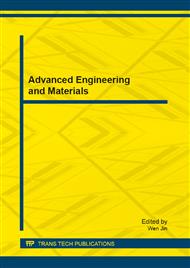p.326
p.332
p.338
p.343
p.347
p.355
p.359
p.365
p.371
Experimental and Numerical Study on Seismic Performance of Flat Columns under Bilateral Cyclic Loading
Abstract:
In order to research seismic behavior of flat columns under bilateral cyclic loading with different angles, pseudo-static tests are conducted, which includes three 1:2 scaled flat columns. The height-width ratio of the column section is 5. And the loading directions are 00, 250 and 450 respectively. By observation of the test phenomenon and analysis of the data, the seismic performance of the columns including stiffness, skeleton curves, hysteresis curves, ductility and energy dissipation are obtained. Moreover, finite element program ANSYS is employed to simulate the bearing capacity of specimens. The research shows that with the loading angles increasing from 0 to 45, the strength of the flat column decreased gradually, while the ductility and energy dissipation capacity increase, and the failure mode changed from compression-shear to compression-bending. P-Δ effect becomes evident at lager values of loading angle. The compression-shearing curve of flat column complies with a heart-shape curve.
Info:
Periodical:
Pages:
347-354
Citation:
Online since:
February 2013
Authors:
Price:
Сopyright:
© 2013 Trans Tech Publications Ltd. All Rights Reserved
Share:
Citation:


